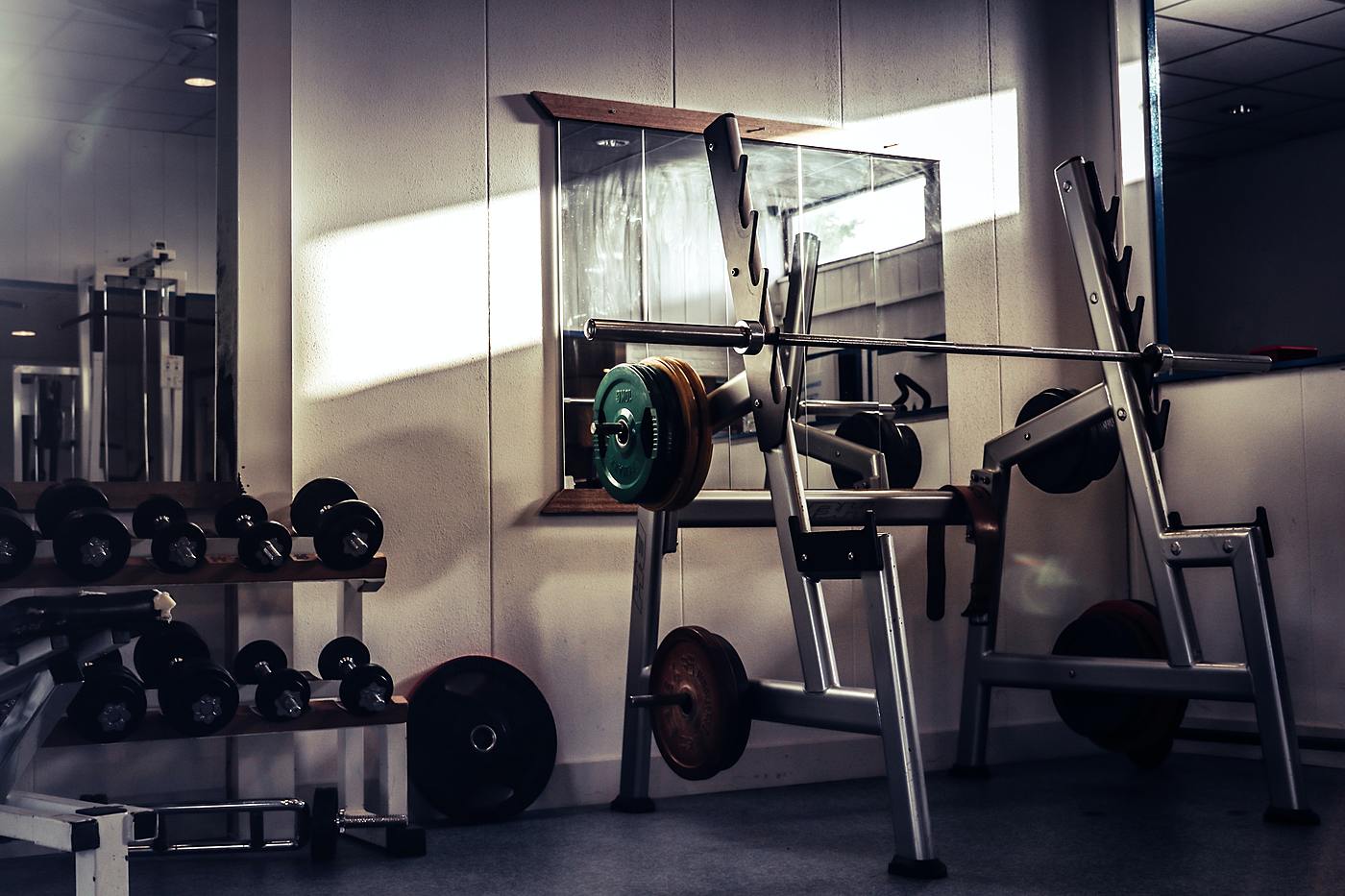
Photo by Jelmer Assink on Unsplash
We’re thrilled to run this guest post from Rina Raphael, who writes Well To Do, a newsletter examining the wellness industry, and is also writing a book on the subject to be published next year. Raphael is a journalist who covers everything from the crystal craze to fitness tech innovation, in order to answer the question: Why is everyone so wellness obsessed?
Here’s Rina:
As the COVID-19 pandemic eases in some regions and flares up in others, gyms across the country, like many businesses, are running out of money and time. So, many have begun reopening, haltingly, and with caution.
Yet, it seems certain that they and the fitness industry will never be quite the same. While the pandemic may have accelerated the rise of home-based fitness apps, consumers have been embracing them in growing numbers for some time. And given the hurdles and perceived danger of in-person workouts, that’s not a surprising trend.
States like Connecticut require gyms to operate at 50% capacity, while Massachusetts mandates patrons wear face coverings during exercise. Attendees must stay six feet away from one another and equipment requires constant cleanings. (You could, however, pay $15/hr for a “cleaning chaperone” to wipe down your dumbbells and “ensure” you stay socially distant.)
Not that any of this makes clients all that more at ease: A Mindbody survey found that only 24% of consumers feel comfortable going to health clubs after reopening, and 28% feel “not at all comfortable.”
This is not, of course, what the fitness industry had hoped for, especially in lieu of sobering developments: Gold Gyms and 24 Hour Fitness recently filed for bankruptcy, while TSI Holdings (New York Sports Club) is on the verge of it. Fitness industry analyst Bryan O’Rourke predicts 20-30% of gym doors will close as even just a 10% dip in revenue is enough to shutter some for good.
“All that COVID-19 did was accelerate the underlying trends that were already there,” says O’Rourke. “There's been an overbuilding in certain markets of those kinds of [physical] locations that are undercapitalized. And to the extent that they can't survive for very long, they're going to go away.”
There’s more to it than just too many studios: Consumers want convenience and low prices—and it’s getting harder for brick-and-mortar to compete with streaming platforms and apps. Throughout quarantine, Americans discovered the joys of exercising in their living rooms with Peloton, Aaptiv, and Obé. A Mindbody research report found that in April, more than 80% of consumers attended streaming fitness classes on at least a weekly basis (compared to just 7% in 2019).
That’s partially due to a lack of competing activities. One-third say they’re working out more because they have more time and not much else to do. But nevertheless, they’re growing used to a new way of exercising.
Interactive home gym Mirror, for example, saw clients increase their usage by 50%, with the average client going from 10 workouts a month to 15.
“We have seen an even more intensified level of engagement during this time,” says Mirror founder and CEO Brynn Putnam. “The pandemic has caused further habit-forming patterns which would seem to be permanent in nature. While we don’t purport to know what will happen to the boutique fitness industry after the pandemic, our data points to strong, lasting trend lines around at-home practices.”
This isn’t terribly surprising: Like nearly every other industry (most notably food), a convenient, frictionless experience becomes a premier choice. In fact, a recent survey of 2,000 Americans who exercise at least twice a week found that 24% are “over” gyms and 42% now prefer their at-home setup.
As one streaming convert tweeted, “[Brick-and-mortar gym] is not worth it, to me, for 10x the price. Got a workout that’s just as good from home.”
Ostensibly, the digital fitness market is edging out an already bruised and battered brick and mortar sector. Last year, more than a billion people used fitness trackers or apps (including smartwatches), whereas a couple hundred million frequented commercial fitness facilities. And while there will always be people who prefer IRL, it’s effectively losing its SoulCycle-fueled dominance. For many brands, it’s a loud signal to diversify offerings.
Fhitting Room, a HIIT and strength-training brand with three studios in New York, quickly pivoted to digital classes in March. With only 24 participants per class, Fhitting Room Live allows for two-way verbal interaction between trainers and clients. It now boasts 90 classes a week, charging $20 per virtual class versus $38 for in-studio classes.
“[The lockdown] has been incredibly devastating,” reports Fhitting Room founder Kari Saitowitz. “We're at about 40% revenue replacement on a monthly basis.”
Prior to COVID-19, Fhitting Room wasn’t particularly focused on digital, instead looking toward physical expansion. That’s since changed: Digital classes are no longer a temporary solution but one the brand will further invest in. Twenty percent of traffic now comes from individuals who had never even stepped foot inside one of their studios.
“We are putting a big focus on penetrating new countries, new markets, new cities,” says Saitowitz, noting the more scalable and cost-effective digital model. “Being boundaryless has been a huge silver lining for us — we've been able to tap into a much bigger opportunity.”
Granted, the majority of consumers plan to return to their previous routines once studios fully (and safely) reopen, according to a recent Mindbody study. However 43% of those plan to incorporate a virtual element as well, a significant shift since 2019.
Mindbody, a digital booking platform that serves 35 million consumers, saw user activity plummet by more than 90% in March. In response, the company launched a virtual wellness platform in partnership with Amazon. It acts like a “Zoom of wellness” by helping fitness studios live stream classes. By May, over 4,300 clients adopted the platform and facilitated over three million bookings.
“It's become a lifeline for many of our customers,” says Mindbody CEO Rick Stollmeyer.
(O’Rourke, however, likens Mindbody’s virtual platform to a Trojan horse for the traditional gym and health club industry. “They’re the Amazon to the Books-A-Million,” he opines. “And they don't want the studios to realize this.”)
At the start of the pandemic, many studios moved classes to Instagram or Facebook Live, but quickly discovered they could not control access or sustain a business. Through Mindbody’s new platform, they could do what analysts always told them they should: invest in digital extension. (Not that Mindbody is without fees that many fitness providers find difficult to pay for at this time.)
“I don't think your business will be around in a year if you haven't [incorporated digital],” warns Stollmeyer. Of course, this is far easier for equipment-light modalities like yoga or HIIT, unlike categories such as reformer pilates or spinning.
Gyms won’t entirely vanish—78% of consumers prefer in-person for the accountability component and experience of sweating alongside fellow fitness devotees. But with so many new restrictions—attendee limits, constant sanitation, etc.—the price per class will undoubtedly increase. Then, even more consumers might opt for more affordable at-home solutions. This will prove most challenging for mom and pop studios, especially if they’re dependent on online advertising; they have no mechanism of competing against top tier brands in their vicinity.
“It'd be a terrible outcome if, in a few years from now, there are only 10 brands serving the country,” says Stollmeyer. “What makes wellness so distinctly joyful is that it's part of a community.”
Mindbody’s CEO remains optimistic, envisioning a future in which more brands invest in a hybrid model that incorporates both in-person and at-home offerings. “I think it will be the thing that finally democratizes wellness instead of just being the habit of the wealthy and the professional classes,” says Stollmeyer. “We believe that one of the positive outcomes from this terrible event will be a global recognition that wellness isn't just a ‘nice-to-have’ — wellness is essential.”
O’Rourke thinks there’s also much more to come on the technological innovation front. If the last few years saw the adoption of heart rate monitors, fitness trackers, and gamified apps, the next wave will see a proliferation of two-way platforms (much like Mirror’s private instruction), immersive experiences, and far more data-driven, AI tools.
“And that's just the beginning,” says O’Rourke. Apple, for example, is just getting its feet wet.
Wellness remains one of the top discretionary income spends in growth markets, in part because people value their health as they age. This will continue to be a robust market, notes O’Rourke, though increasingly shift to digital.
“The real innovation is not in the market yet, for the most part, because the pain of the reality—just like in retail—has not been completely digested yet,” says O’Rourke.
As for Fhitting Room, they’re opting for a slow re-opening. Saitowitz reports that half of her clients are eager to escape their cramped New York City apartments and return to the studio, while the other half now prefers rolling out of bed and simply turning on their favorite instructor. All this gives her more time to debate the future of her business.
“I think the question is: Do we ever get back to 100%? Is there even a demand for 100%?”
Related Reads
The best at-home fitness apps: The top streaming services for yoga lovers, dance addicts, even those who are sick of looking at a screen. (Elemental)
One in four Americans will not return to gyms after pandemic ends: A recent survey found that 24% are “over them,” with one in three saying they will likely go less than before. (NYP)
Are gyms low-risk? Several European countries that allowed fitness facilities to reopen haven’t reported any associated uptick in COVID-19 cases. (WSJ)
Meanwhile, South Korean researchers warn of gym spread: Moist, warm air combined with turbulent airflow from exercising may create an environment in which virus droplets can easily spread. (Healthline)
Temperature checks and workout “pods”: Fitness enthusiasts will encounter a wide range of guidelines to enforce safety. (Your Sun)
Planet Fitness hit by COVID-19: More than 200 members may have been exposed in a West Virginia studio. (TODAY)
How did you feel about this post?
The Only Subscription
You Need to
Stay at the
Edge of AI
The essential toolkit for those shaping the future
"This might be the best value you
can get from an AI subscription."
- Jay S.
Join 100,000+ leaders, builders, and innovators

Email address
Already have an account? Sign in
What is included in a subscription?
Daily insights from AI pioneers + early access to powerful AI tools








Comments
Don't have an account? Sign up!
I use the gym for strength training, it's really about renting the equipment instead of having to own it (with associated space, upkeep and so on for something I use twice a week). If the gyms are less crowded and can make this up with price increases that would be great. Just as diverse as gyms themselves, the people visiting have different goals not all of which can be achieved at home.